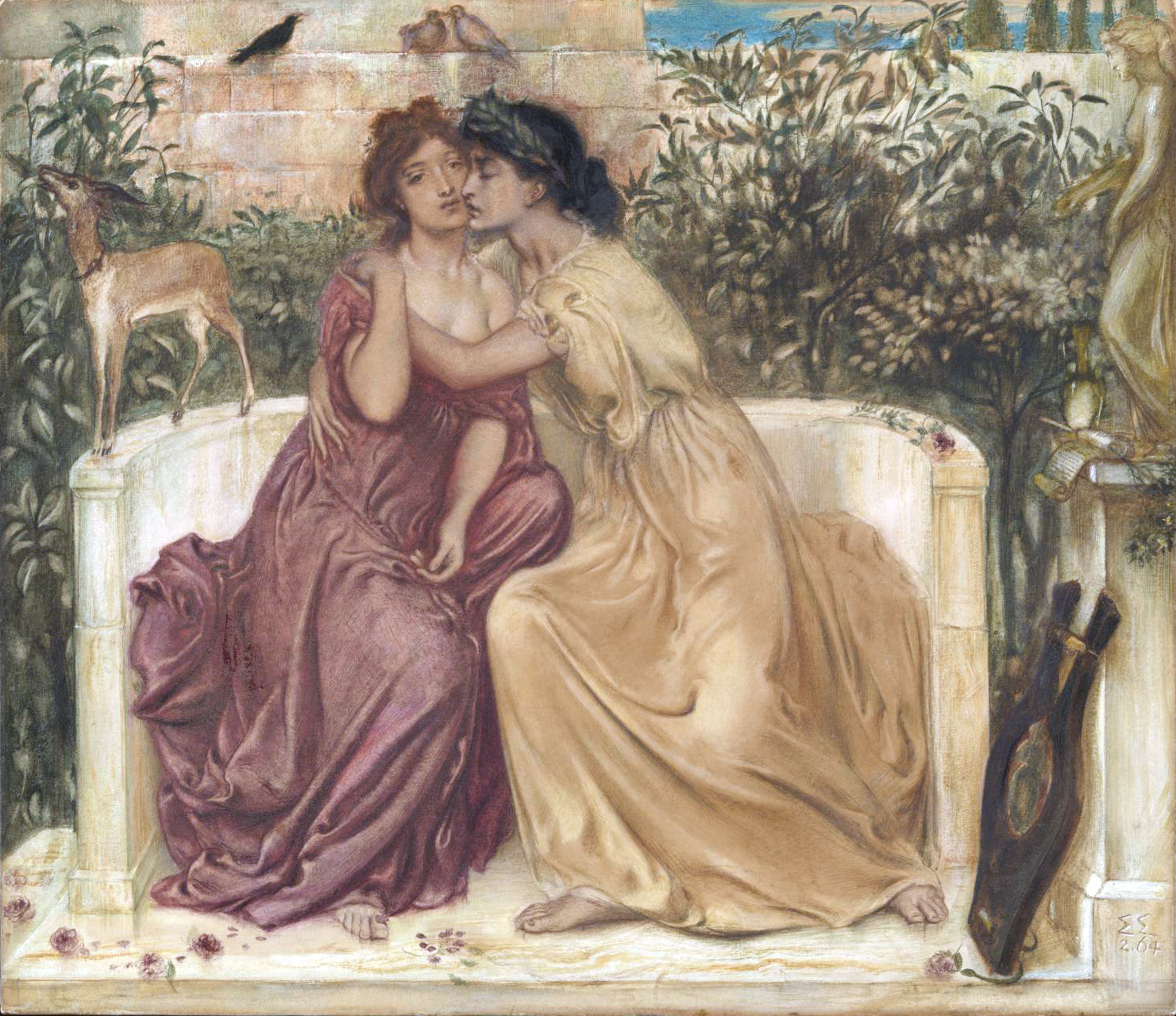In an era when homosexuality was widely condemned—sometimes even criminalised, as in the case of Oscar Wilde—same-sex lovers had to be discreet in their affections. However, the constraints of Victorian society also provided unique opportunities for same-sex romance to thrive under the guise of deep friendships and coded messages.
Romantic Friendships
In her book Between Women: Friendship, Desire, and Marriage in Victorian England (2007), Sharon Marcus describes how Victorian society encouraged intense expression of love and affection between women. It was common for women to express their love for each other through affectionate letters, poetry, and even Valentine’s cards. These “romantic friendships” were seen as innocent, allowing same-sex love to flourish without arousing suspicion.
For example, women might exchange sentimental Valentine’s messages filled with devotion, using language that modern readers might interpret as unmistakably romantic. A typical card might read:
“To my dearest and most beloved friend, may our hearts remain ever entwined, forever beating in harmony.”
Marcus even describes women who exchanged rings saw themselves, and by others, as placid embodiments of the middle-class ideal of marriage.

Same-Sex Romance in Women’s Colleges
At women’s colleges in Victorian America, romantic same-sex relationships—often referred to as “smashes” or “crushes”—were common. These relationships ranged from one-sided infatuations to deeply mutual bonds. It was a common tradition for younger students, known as “freshies,” to develop strong romantic attachments to older students, who in turn would “escort” them to social events. Valentine’s Day provided a perfect occasion for students to openly exchange tokens of their devotion, such as flowers and sweets, making it the ultimate celebration of same-sex love during this time.

Handmade Valentine’s cards were also a cherished tradition at institutions like Vassar College (a single-sex school), where students would carefully design and decorate cards with floral motifs and heartfelt verses. These tokens of affection were often preserved in scrapbooks, reflecting the deep cultural appreciation for female friendships and the broad acceptance of such relationships in 19th-century America.
For men, the expression of same-sex love was more dangerous due to strict anti-homosexual laws. However, some used coded language and symbolism to convey their affections. Letters would be written with poetic ambiguity, and gifts such as flowers carried hidden meanings.
Floriography: The Language of Flowers
The Victorians had a deep appreciation for floriography, or the symbolic meaning of flowers. Those in same-sex relationships could subtly express their feelings through carefully chosen floral arrangements. Some key flowers included:
- Violets – Associated with Sapphic love, particularly after the poet Sappho referenced them in her works.
- Green carnations – A symbol of queer identity, popularised by Oscar Wilde in the 1890s.
- Yellow roses – Sometimes used to represent friendship but also unrequited or secret love.
These floral gifts allowed lovers to communicate their feelings without drawing undue attention, making them a powerful tool for clandestine romance. Some Victorian men exchanged flowers on Valentine’s Day as a discreet way to express affection, taking advantage of the widely accepted practice of floriography.

Green carnations, for instance, were often worn or gifted by men in queer circles, a tradition that Wilde helped popularise. While openly romantic Valentine’s exchanges between men were rare due to legal and social restrictions, historical references suggest that carefully chosen floral arrangements served as coded expressions of love.
A different legacy of Valentine’s
The Victorian era’s approach to Valentine’s Day was filled with contradictions. One the one hand, love letters travelled as frequently as vinegar valentines which was more about scorn. And while love was idealised in grand, sentimental gestures, the same holiday also provided an outlet for secrecy and subversion. For those in same-sex relationships, it was a time to exchange hidden messages of devotion, finding love in an era of repression.
In many ways, the traditions of Victorian Valentine’s Day reflect the complexities of human emotion—passion and scorn, secrecy and expression—all wrapped up in the delicate lace and ink of a well-timed card.











